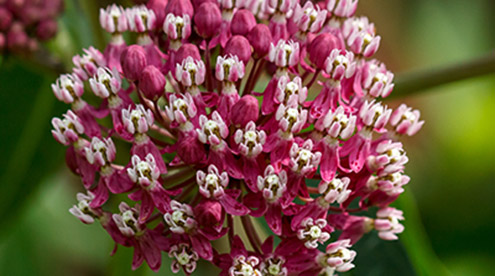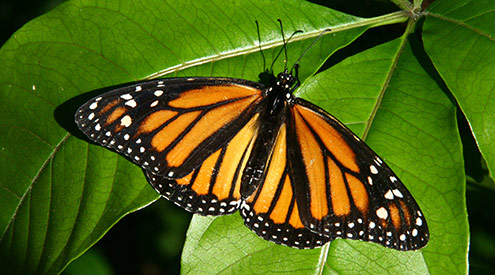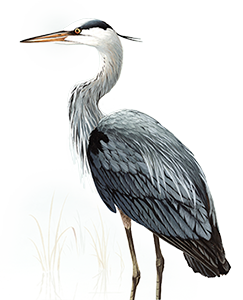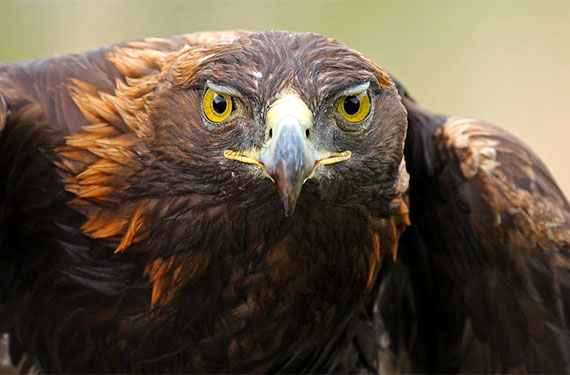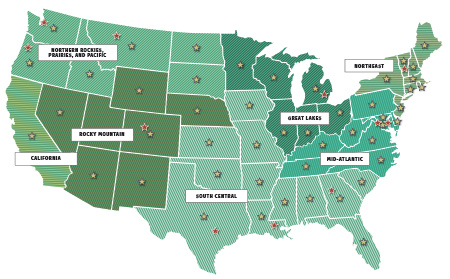North America’s native pollinators are a highly diverse group in nature, comprised of bees, butterflies, moths, and other insects, as well as hummingbirds and even bats. As pollinators, many of these animals are economically important—yet many native pollinators, due to threats like habitat loss and pesticide use, are in crisis.
Declining pollinator populations could have alarming consequences for natural ecosystems, as well as food production for people. The National Wildlife Federation is working to combat this crisis and conserve the rich natural diversity of bees and other pollinators across North America.
Inspiring Local Actions
 Individual citizens and communities can help solve the pollinator crisis, and the National Wildlife Federation’s Garden for Wildlife program can be a significant part of this effort. Garden for Wildlife’s approach encourages using native plants to attract native pollinators, avoiding the use of pesticides, establishing pollinator-friendly plant ordinances, and developing viable corridors of pollinator habitat within communities.
Individual citizens and communities can help solve the pollinator crisis, and the National Wildlife Federation’s Garden for Wildlife program can be a significant part of this effort. Garden for Wildlife’s approach encourages using native plants to attract native pollinators, avoiding the use of pesticides, establishing pollinator-friendly plant ordinances, and developing viable corridors of pollinator habitat within communities.
In addition, the National Wildlife Federation works with leaders from organizations across conservation, garden trade, voluntary civic, and federal levels as part of the National Pollinator Garden Network to educate citizens on the importance of pollinator habitat and increase pollinator-friendly practices and plants. The network's Million Pollinator Garden Challenge campaign has registered over one million public and private gardens and landscapes to support pollinators.
Both nationally and through the engagement of regions and affiliates, the National Wildlife Federation also helps federal, state, and local government agencies to engage and include communities in strategies to restore pollinator habitat.
Providing Habitat for Monarch Butterflies
 The National Wildlife Federation is working to protect and restore populations of the monarch butterfly, which has suffered precipitous declines in recent decades. We encourage farmers; gardeners; schools; federal, state, and local agencies; and other land managers to bring back the milkweed plants on which monarchs rely. The National Wildlife Federation has also collaborated in the development of the Mid-America Monarch Conservation Strategy with the Midwest Association of Fish and Wildlife Agencies (MAFWA), a strategy that will steer monarch conservation efforts in the Central Flyway for the next 20 years and beyond.
The National Wildlife Federation is working to protect and restore populations of the monarch butterfly, which has suffered precipitous declines in recent decades. We encourage farmers; gardeners; schools; federal, state, and local agencies; and other land managers to bring back the milkweed plants on which monarchs rely. The National Wildlife Federation has also collaborated in the development of the Mid-America Monarch Conservation Strategy with the Midwest Association of Fish and Wildlife Agencies (MAFWA), a strategy that will steer monarch conservation efforts in the Central Flyway for the next 20 years and beyond.
Monitoring Pesticide Impacts
 There is growing concern about pesticides and pollinators—in particular a group of insecticides known as neonicotinoids (or “neonics”), currently the most widely used class of insecticides around the world. Recent research has highlighted a number of concerns with neonics, including their potential to stay in soil for multiple years and contaminate crops and other plants nearby, potentially causing impacts to pollinators. They may also affect bees’ ability to fly and feed, and interact with other pesticides (such as a fungicide) to become more toxic to honey bees.
There is growing concern about pesticides and pollinators—in particular a group of insecticides known as neonicotinoids (or “neonics”), currently the most widely used class of insecticides around the world. Recent research has highlighted a number of concerns with neonics, including their potential to stay in soil for multiple years and contaminate crops and other plants nearby, potentially causing impacts to pollinators. They may also affect bees’ ability to fly and feed, and interact with other pesticides (such as a fungicide) to become more toxic to honey bees.
The National Wildlife Federation state affiliates adopted a resolution calling for the Environmental Protection Agency to suspend uses of neonics until further research shows there is no unacceptable harm to native bees, monarch butterflies, other pollinators, and other wildlife.
Supporting Effective Agricultural Practices
 Pollinators require a diverse habitat to survive, which includes native grasses, trees, and flowering plants. As natural landscapes are increasingly converted to cropland, and agricultural practices intensify, less habitat is available for pollinators and other wildlife. The National Wildlife Federation continues to support effective agriculture conservation practices that maintain, protect, and restore diverse natural habitats for pollinators and other wildlife, including supporting the funding for Farm Bill conservation programs that incentivize the creation of habitat for pollinators on agricultural land.
Pollinators require a diverse habitat to survive, which includes native grasses, trees, and flowering plants. As natural landscapes are increasingly converted to cropland, and agricultural practices intensify, less habitat is available for pollinators and other wildlife. The National Wildlife Federation continues to support effective agriculture conservation practices that maintain, protect, and restore diverse natural habitats for pollinators and other wildlife, including supporting the funding for Farm Bill conservation programs that incentivize the creation of habitat for pollinators on agricultural land.

